Features of the choice of linoleum with a tile pattern
Today, linoleum is one of the most popular floor coverings. It differs into three types, depending on the application and the level of required load:
- Domestic. The thickness is about 1.5 cm. It is intended for premises with low traffic: usually, these are residential apartments and houses. The strength level is low, but the service life is at least 5 years.
- Semi-commercial. More wear-resistant due to a dense substrate and a special protective compound that covers the surface. Such material is laid in rooms with increased stress.
- Commercial. Suitable for shopping malls, medical and educational institutions, where the material is subjected to maximum weight load on a daily basis. The highest quality, service life of about 40 years.
Pros and cons
Linoleum for tiles combines many advantages, but also has several significant disadvantages:
| pros | Minuses |
|---|---|
It combines the appearance of ceramic tiles and the unique characteristics of rolled linoleum. |
Not resistant to weight loads: heavy furniture can dent. |
Easy to install and dismantle, does not require any special skills. Unlike tiles, you don't need to work on the seams. |
If the coating is damaged, it is impossible to replace one fragment: you need to change the entire canvas. |
It has good heat and sound insulation thanks to the backing that retains heat and absorbs sounds. |
Unlike the tiled counterpart, it is not resistant to fire. |
Easy to clean, moisture resistant. |
Only high-quality coatings can convincingly imitate a tiled floor. The world leader in the production of linoleum is the firm "Tarkett". |
Design, shapes, drawings
The design of the coating differs in the types and sizes of "tiles", as well as in a variety of patterns: linoleum can be striped, patterned, in a cage, in a diamond or in the form of a honeycomb.
Squares
Drawing in the form of squares can be called traditional. It is suitable for both Provence and minimalist interiors. Squares serve as inserts on a plain background or alternate, making up a cellular ornament.
In the photo there is a nursery with glossy linoleum made of large squares.
Diamond
Stylish and therefore common version with rhombuses that are combined into a three-dimensional geometric pattern.
In the photo, textured linoleum imitating tiles from graphic rhombuses.
Marble tiles
A coating with imitation of marble or products with marble chips looks expensive and natural.
The photo shows a light bathroom with linoleum in the form of white marble tiles. Thanks to the texture, the coating looks even more expressive.
Under porcelain stoneware
The imitation of porcelain stoneware looks convincing due to the matte finish and the pattern imitating natural stone.
Patchwork
The multi-colored patchwork adds coziness and bright colors to the interior.
With patterns and ornaments
A canvas with ornaments should be laid in a room with plain walls and furniture, so as not to overload the space.
In the photo there is a snow-white kitchen, where the semicircular patterns echo with the shelf holders.
Honeycomb or hexagon
The hexagons fashionable in the 90s on the floor are returning, but not in brown, but in bright colors:
The photo shows an imitation of blue tiles, contrasting with the dark set.
Colors
The modern market offers linoleum with a palette for every taste. The sophisticated black and white combination of tiles laid in a checkerboard pattern or diagonally remains popular.
Also in use are light, pastel colors: gray, beige, white. Brown is used to imitate natural materials.
In the photo there is a children's room in gentle colors. The tile-shaped flooring fits perfectly into the light interior.
The original shades for flooring are purple, black and green. It is recommended to combine them with other, more restrained tones.
Photo of linoleum in the kitchen under the tiles
Linoleum for tiles is a frequent guest in the kitchen, since this room is highly prone to pollution due to constant cooking. The checkered pattern is especially popular, and the warm red shades add juiciness and homeliness to the interior.
In the photo there is a kitchen with flooring in the form of a square tile. Smooth high-quality fabric retains its shine even in rooms prone to frequent dirt.
The floor under porcelain stoneware does not lose its relevance. It is just as attractive, but linoleum has the advantage that the lack of seams makes cleaning easier.
A common option is a canvas with patterns. No dirt is noticeable on them, but such an active floor will successfully play either in a large room, or with neutral walls and a headset.
Unusual combinations of shades and shapes (for example, multi-colored mosaics) will be appreciated by creative people.
Linoleum ideas in the interior of the bathroom
Visually, such a coating is hardly distinguishable from tiles. For a special similarity, manufacturers even imitate tile seams. But unlike a tiled floor, linoleum is much more pleasant to the touch and warmer.
In the photo there is a bathroom with linoleum under patchwork tiles.
Linoleum is moisture resistant, therefore, just like tiles, it is appropriate in the bathroom and toilet, but it costs much less.
The photo shows a spacious bathroom in a country house, the floor of which is covered with linoleum.
Examples of decoration in the corridor
Linoleum under the tiles in the hallway acts as a practical coating that will withstand the aggressive effects of street dirt and chemicals.
The photo shows an ergonomic floor in brown tones: damage and dirt are not noticeable on it.
Photo gallery
Linoleum for tiles is a popular flooring material that has been used for home decoration for a long time. Due to the variety of its types, it will not be difficult to choose the best option for specific conditions.

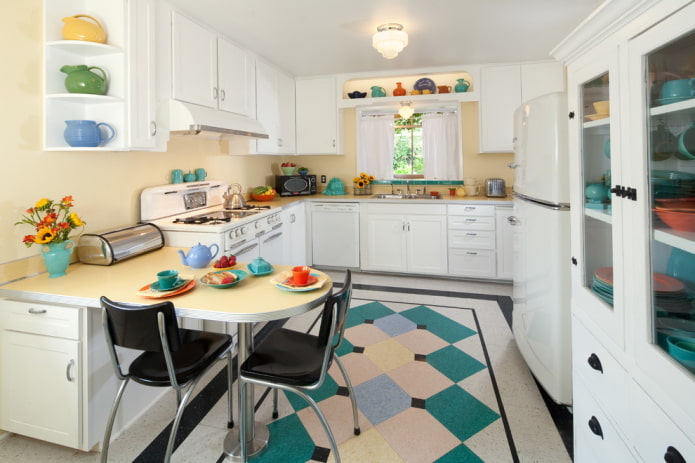
 10 practical tips for arranging a small kitchen in the country
10 practical tips for arranging a small kitchen in the country
 12 simple ideas for a small garden that will make it visually spacious
12 simple ideas for a small garden that will make it visually spacious
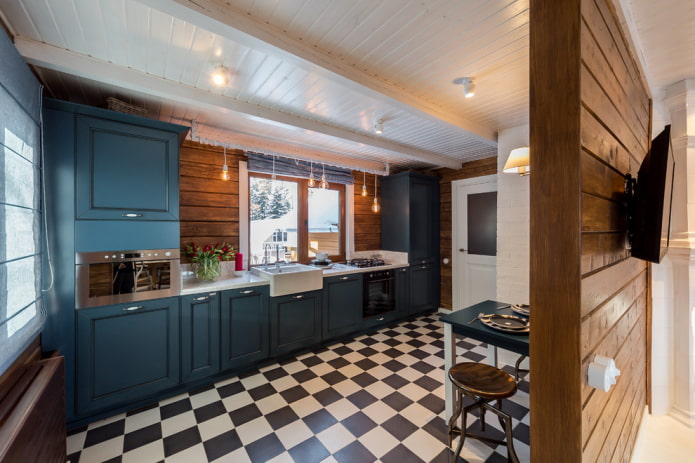
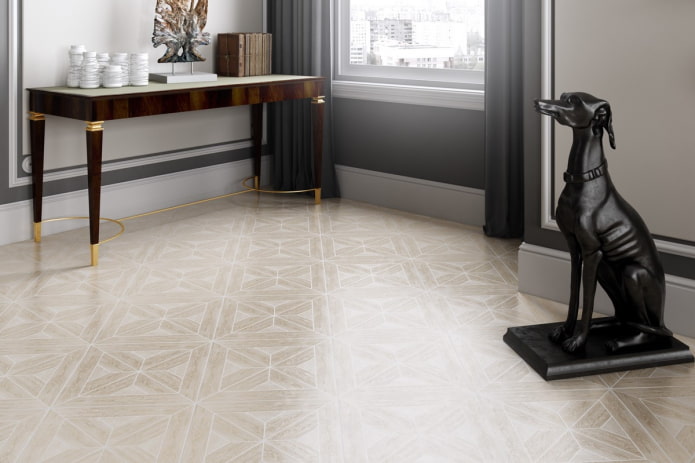
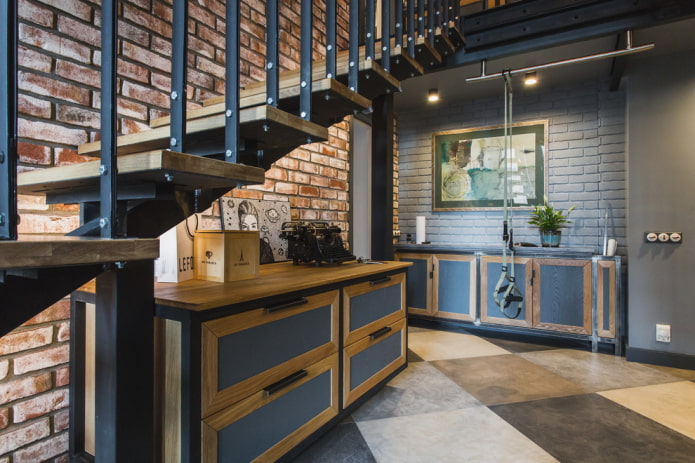

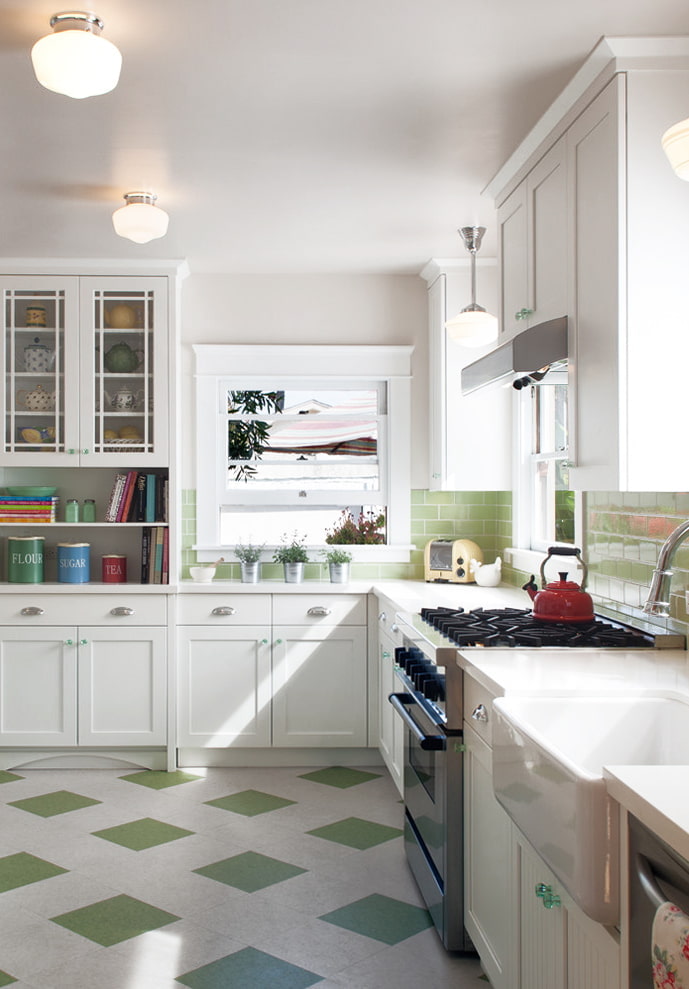

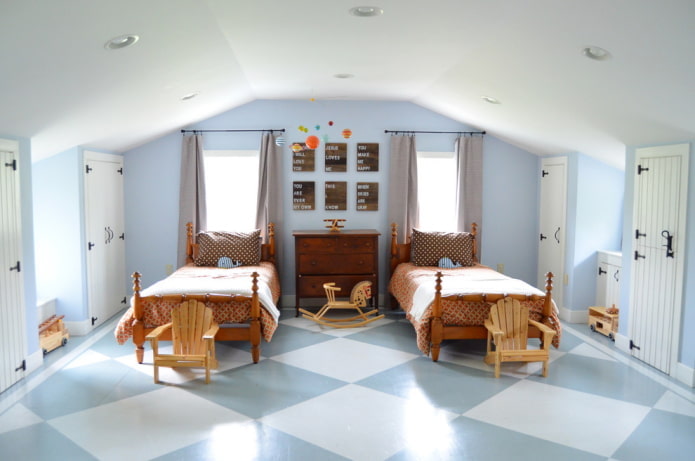

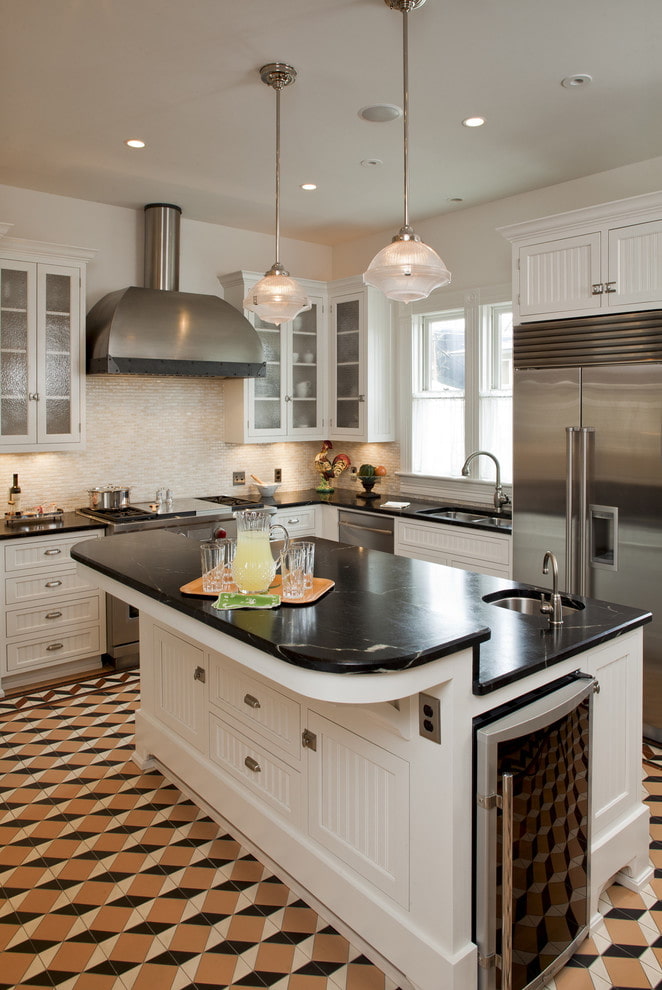
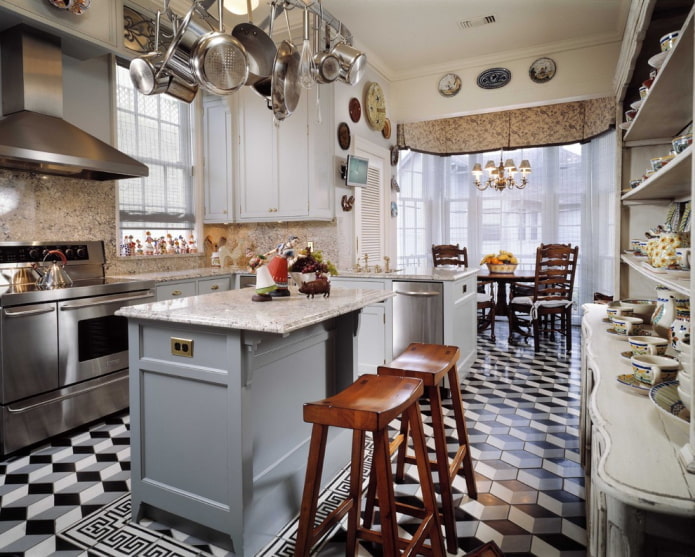
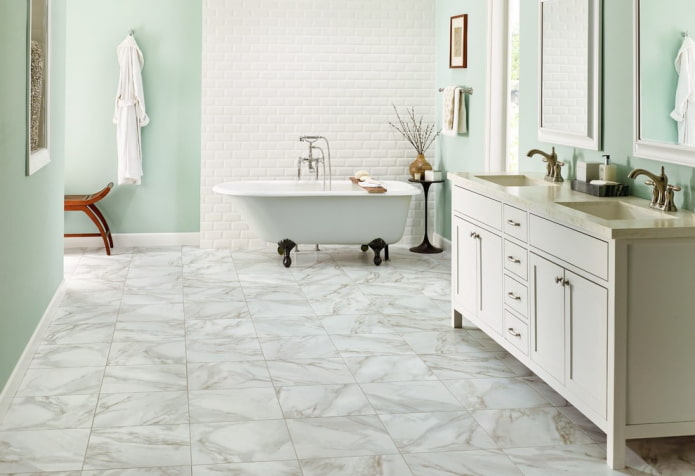


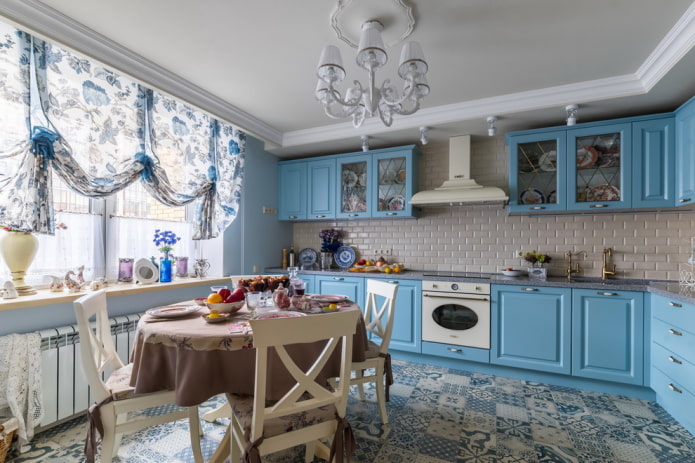
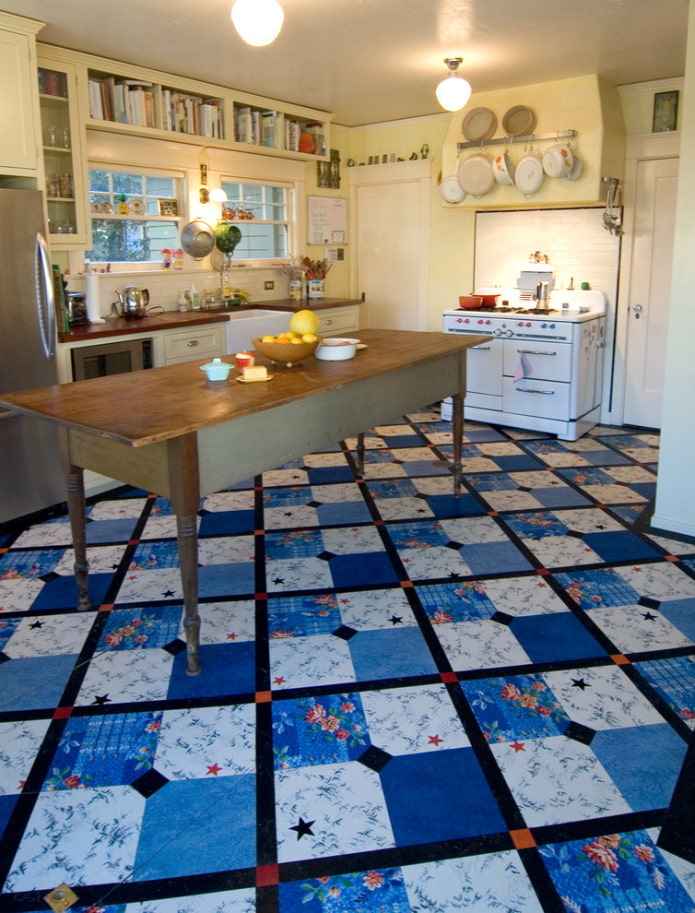
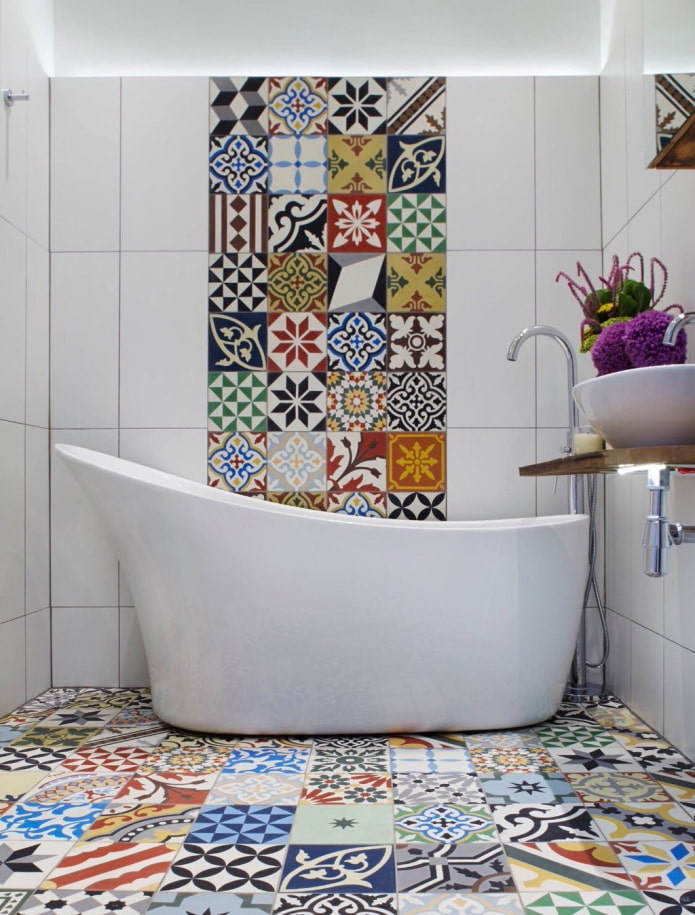
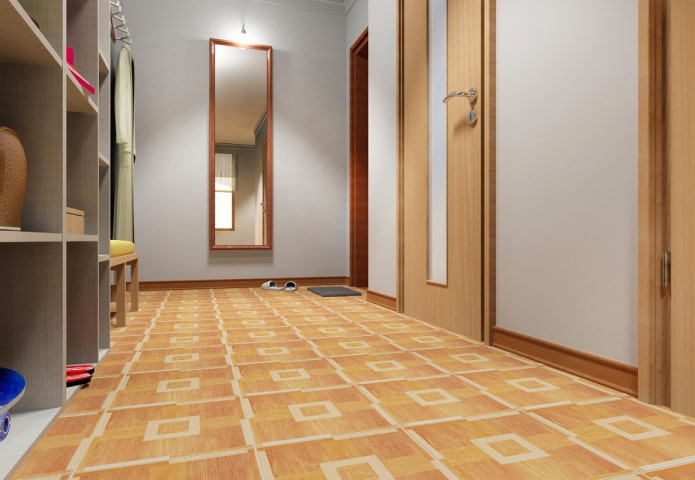


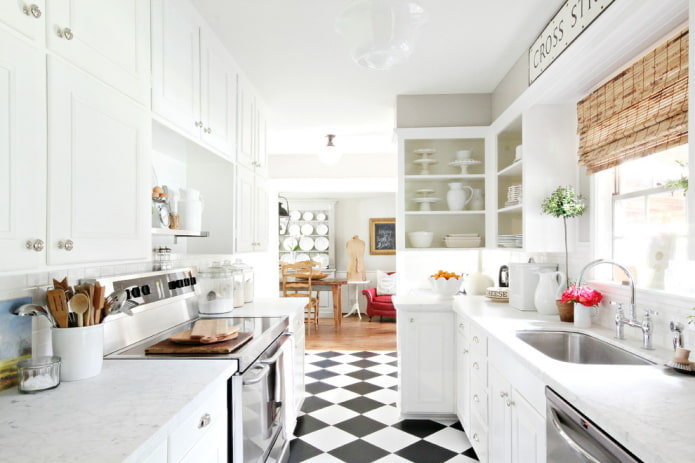
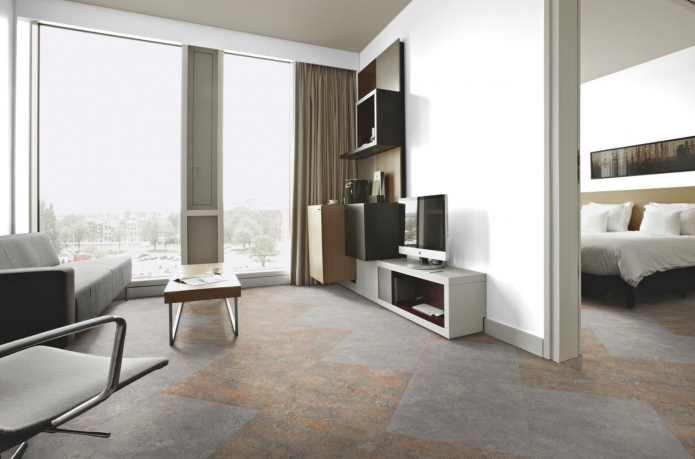
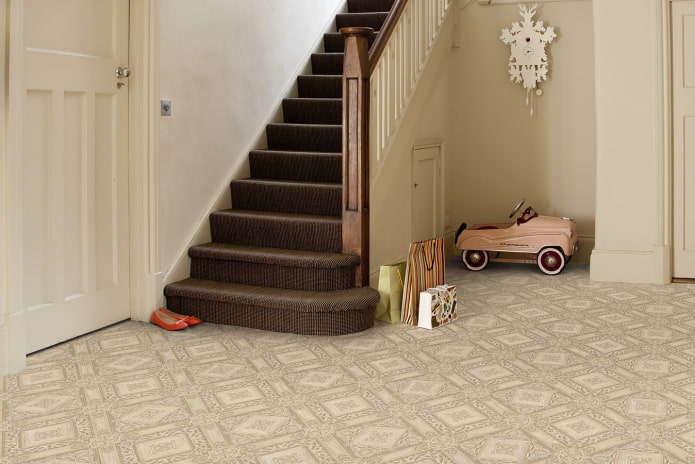
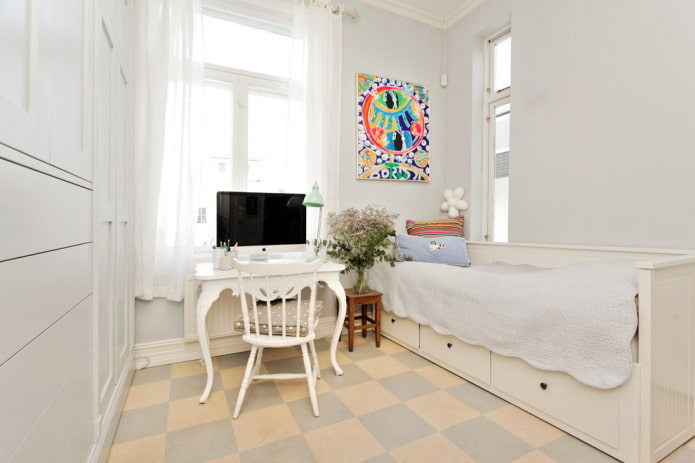
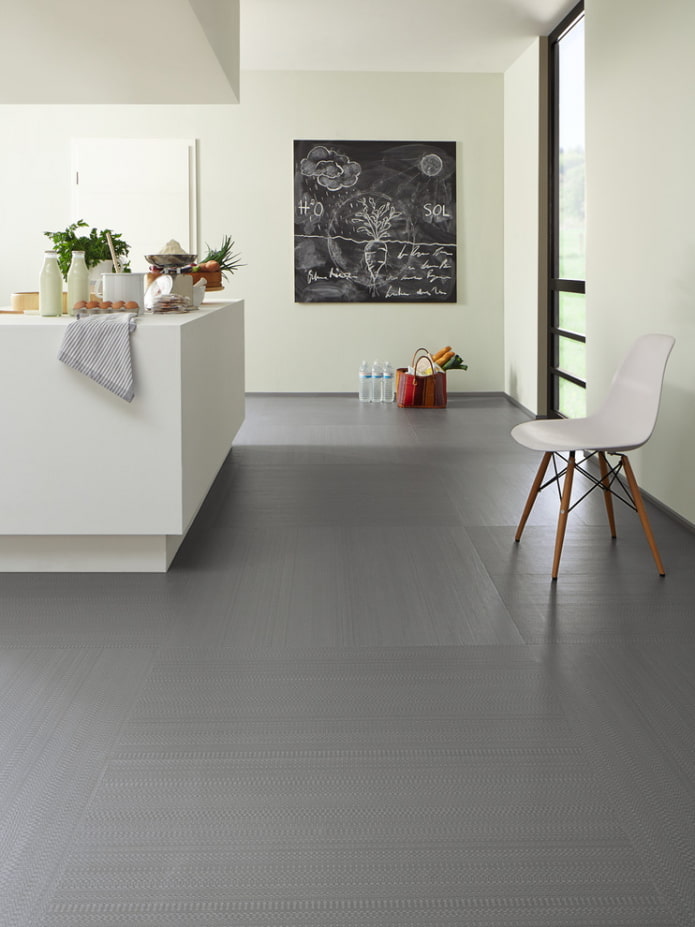



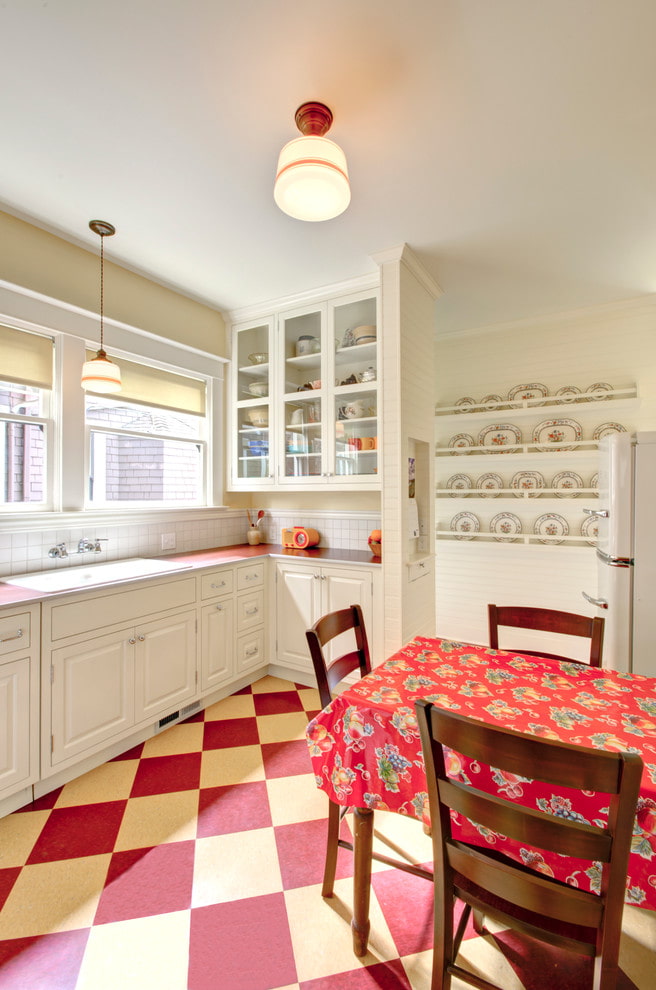

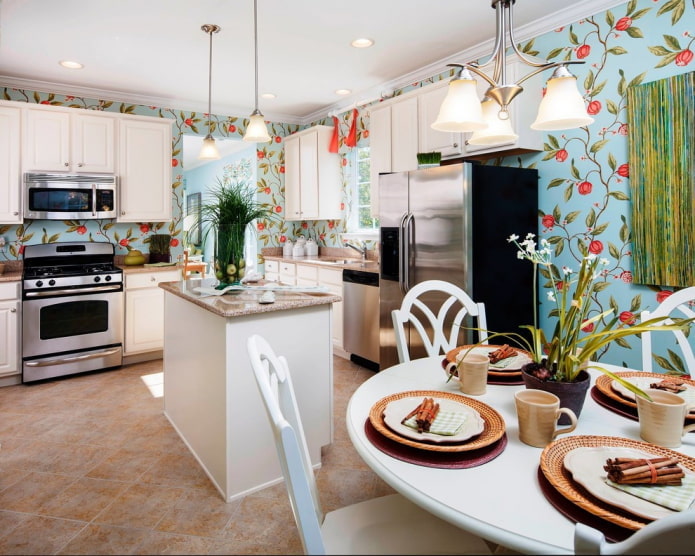
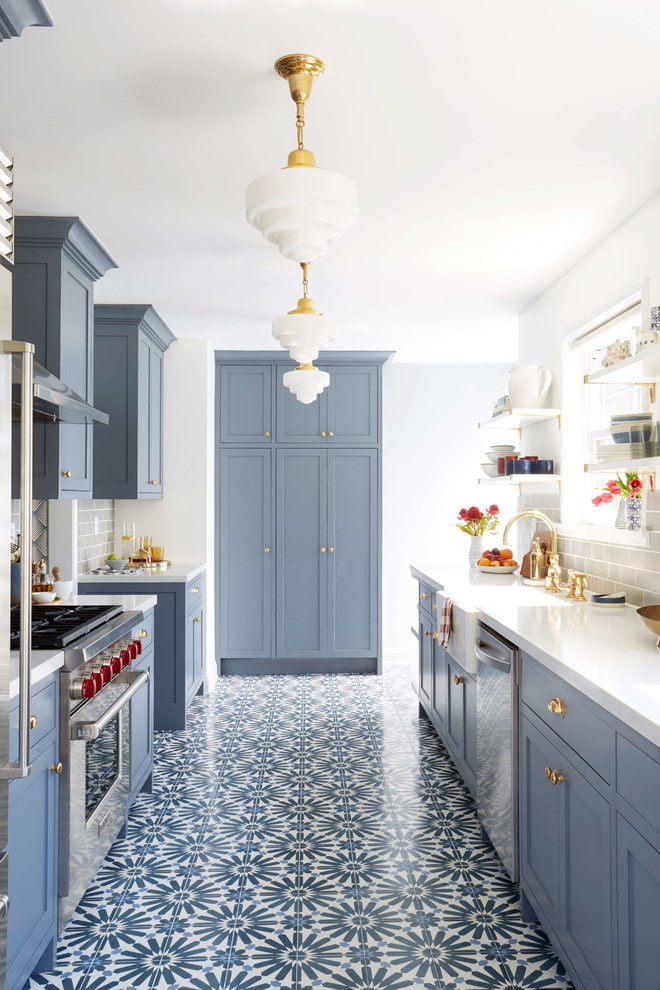
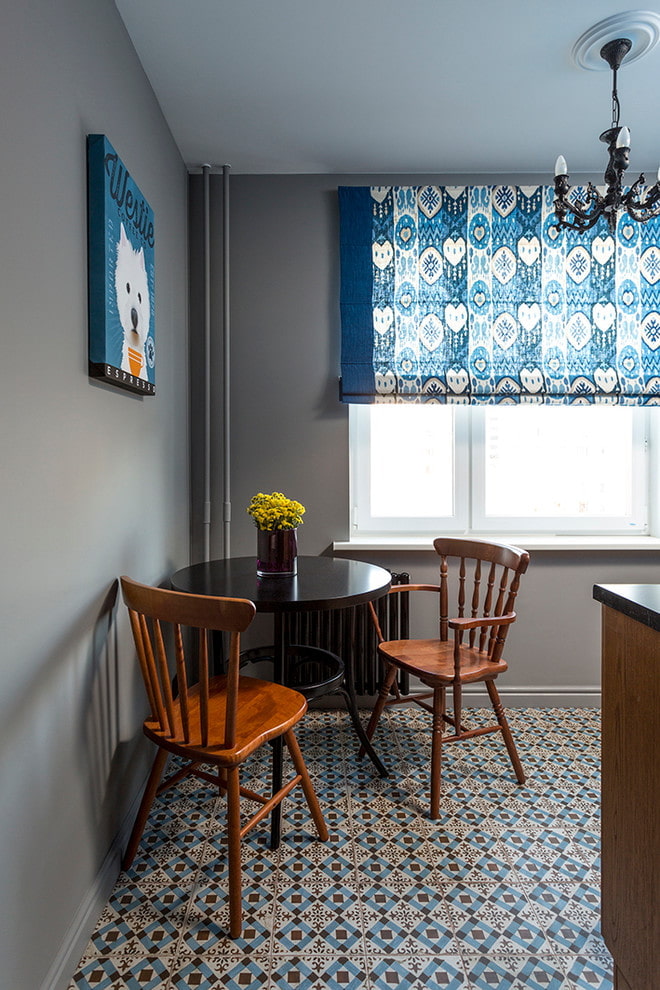

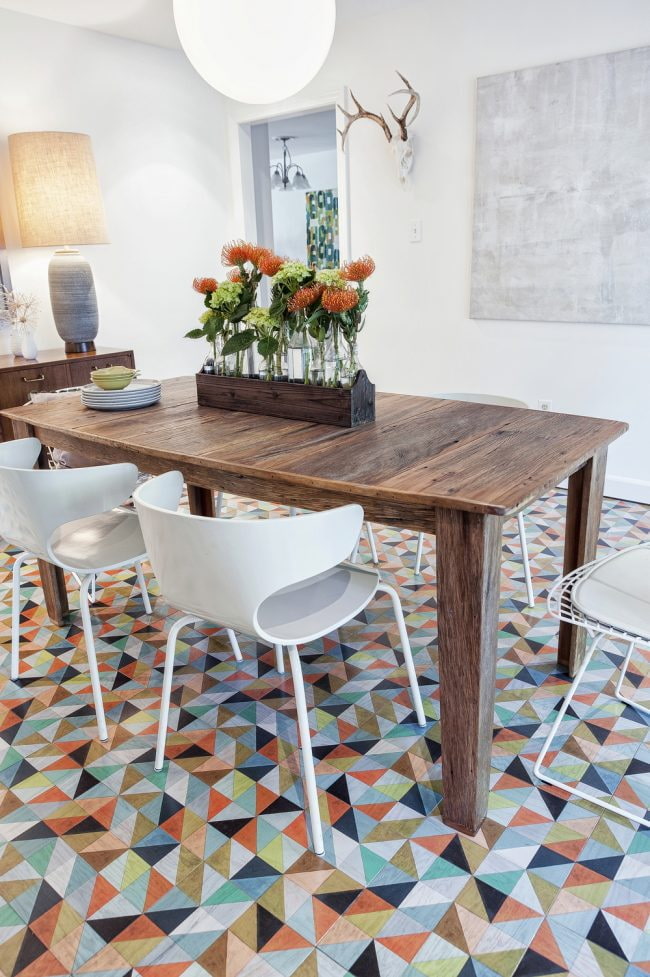

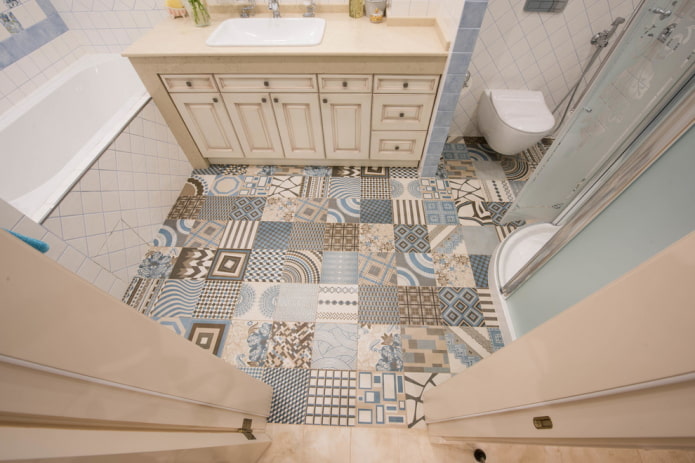
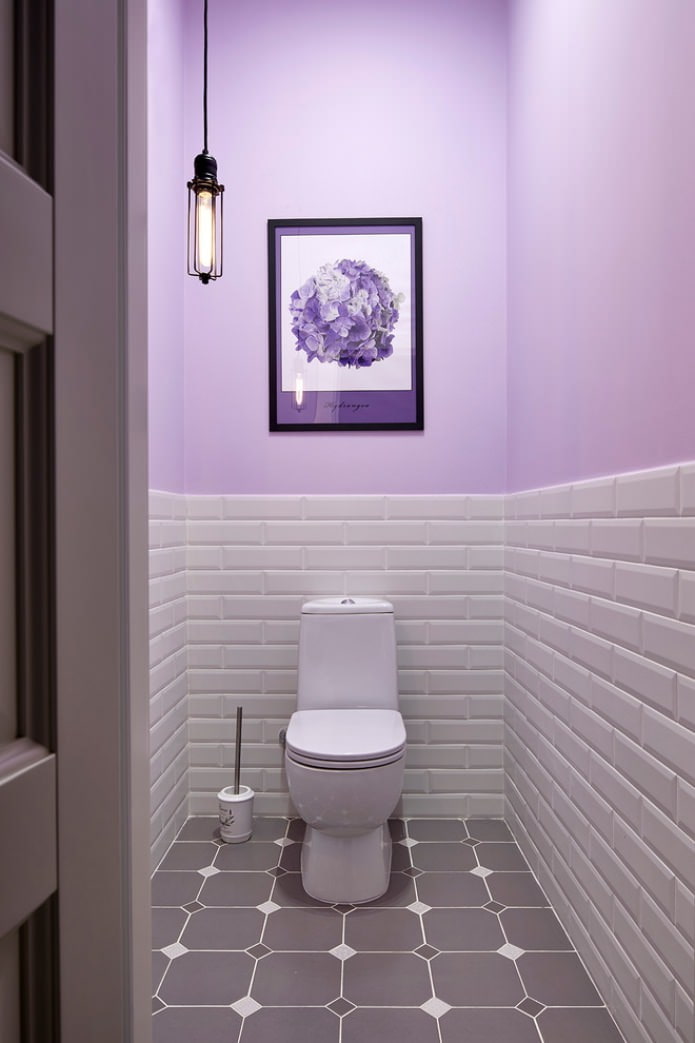
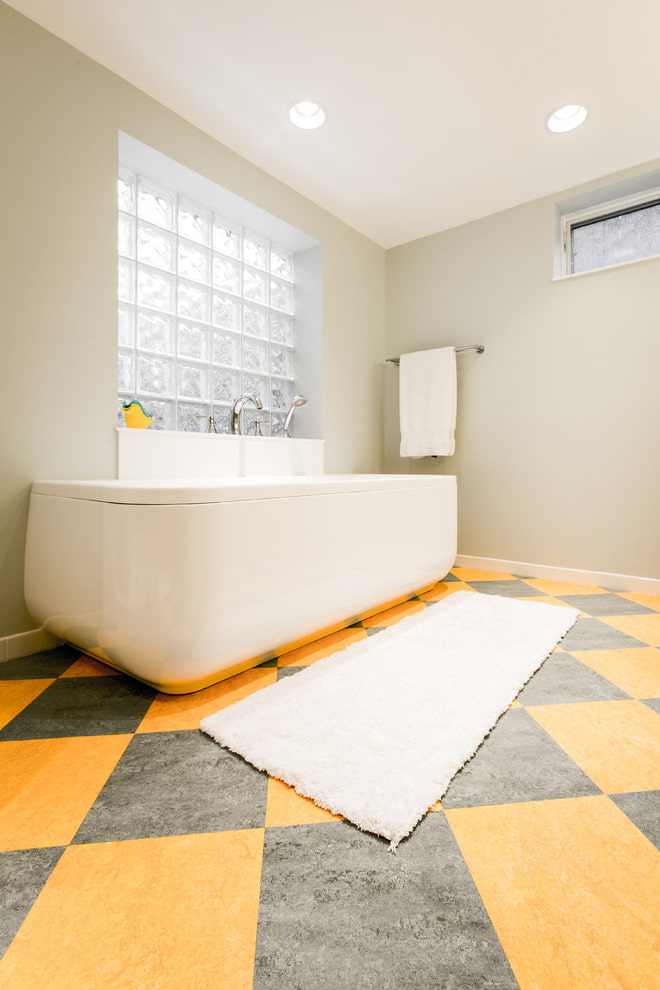
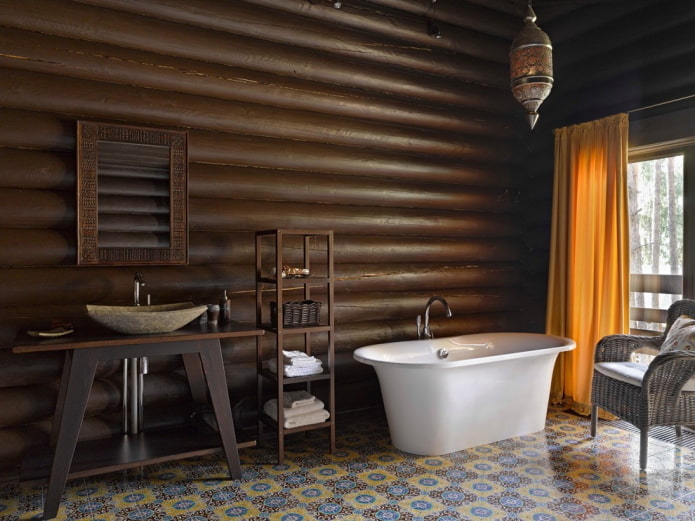
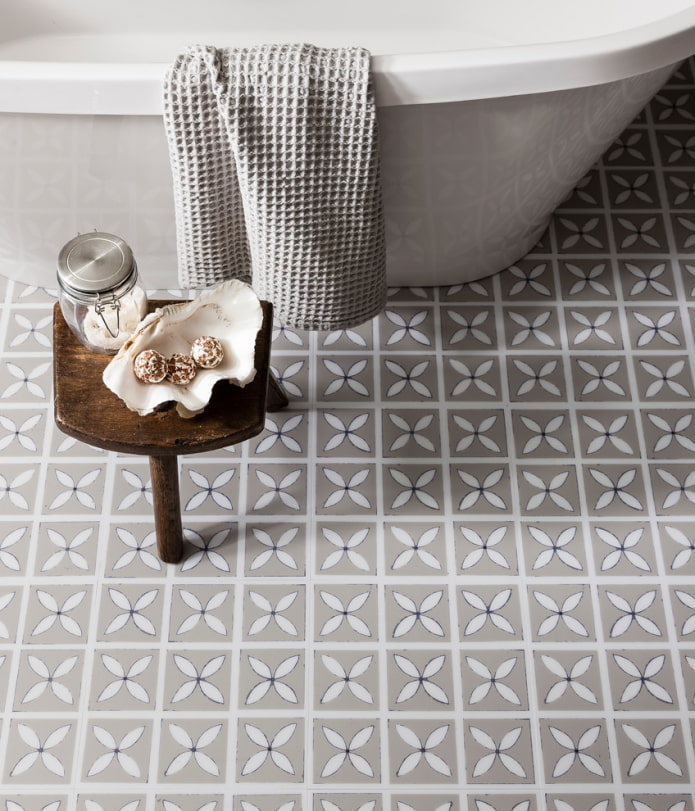
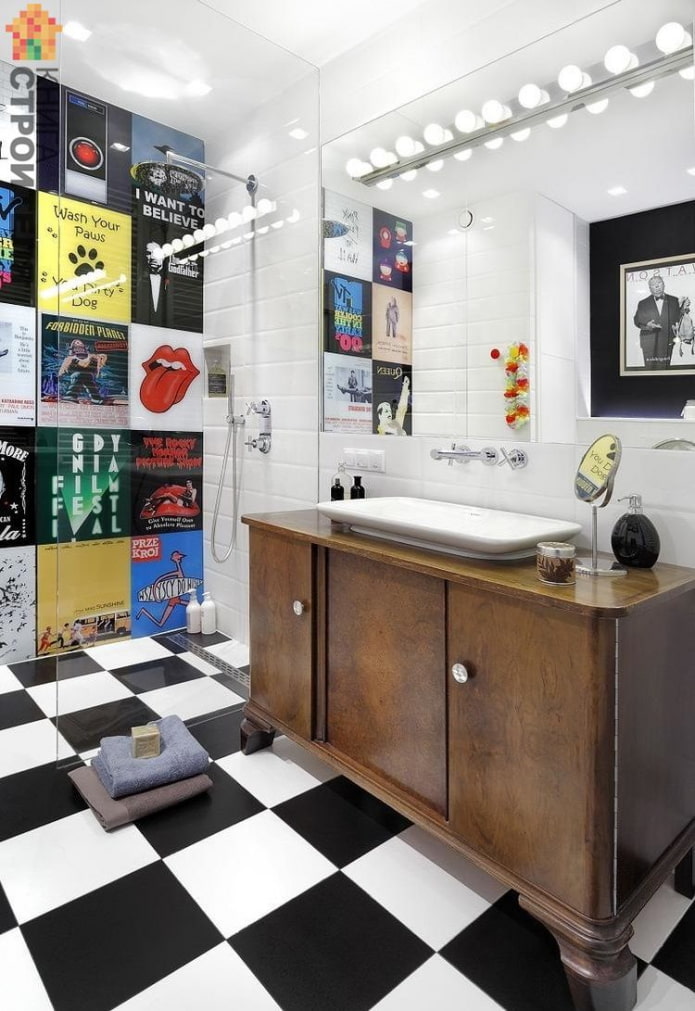
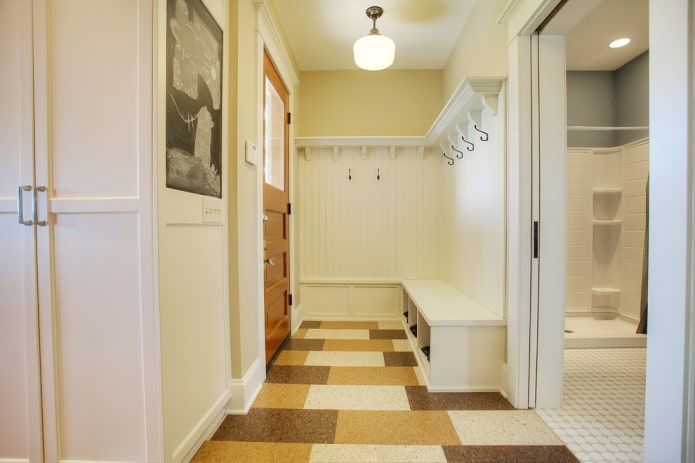
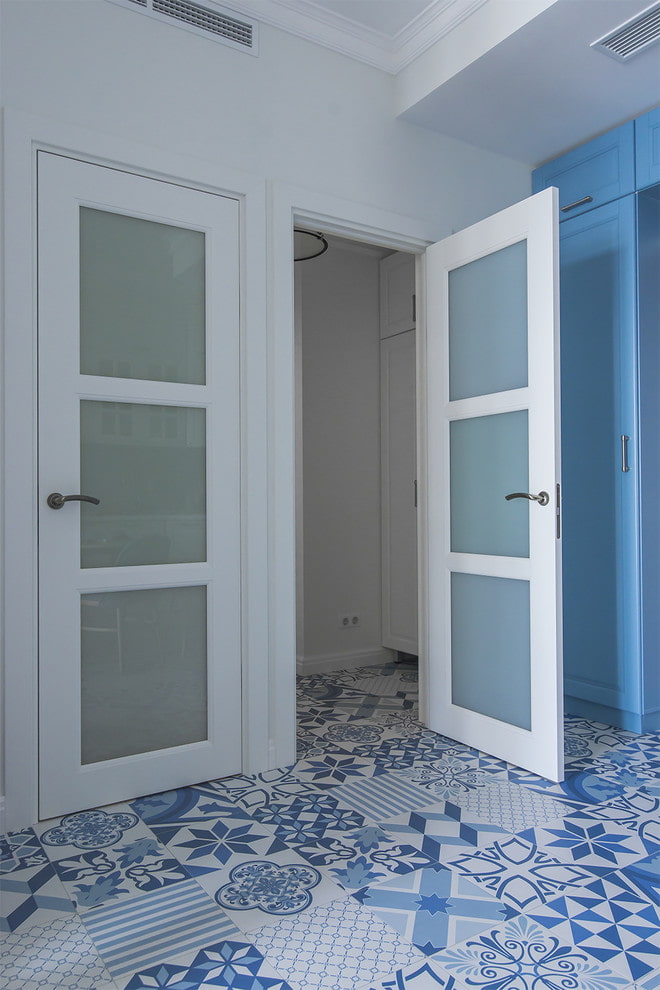
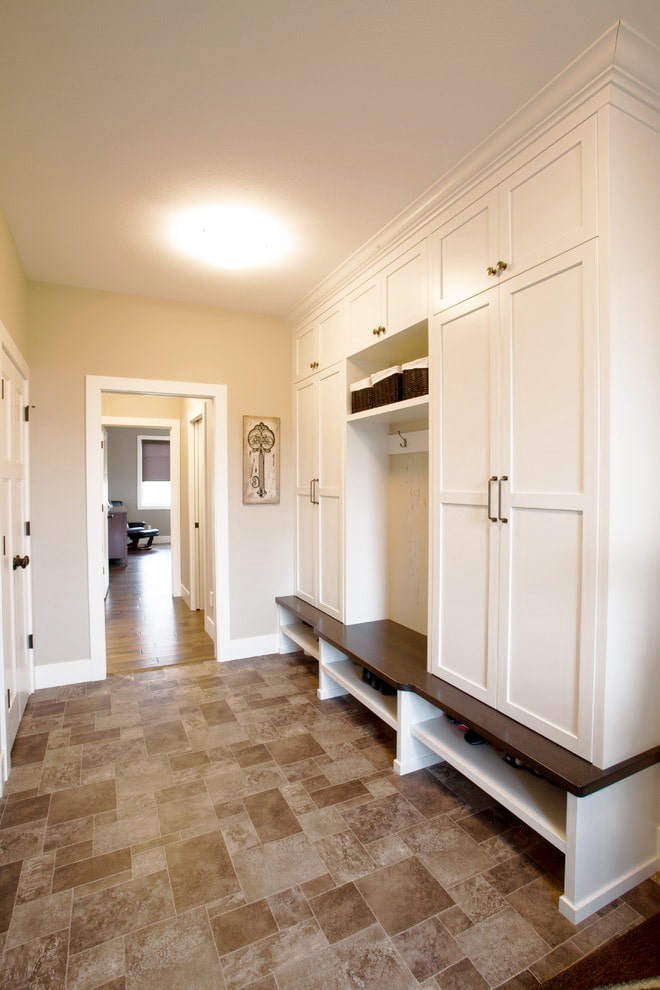
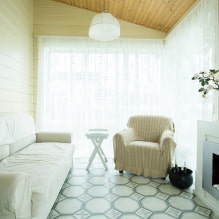
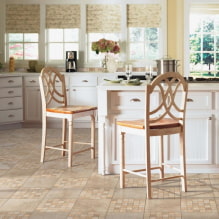
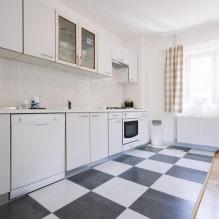
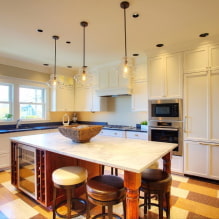

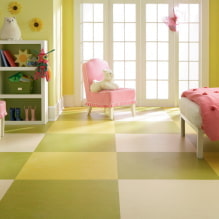

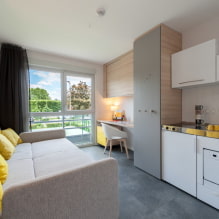

 13 bad habits a good housewife shouldn't have
13 bad habits a good housewife shouldn't have 24/7 home cleanliness - 4 secrets for the perfect housewife
24/7 home cleanliness - 4 secrets for the perfect housewife 6 hotels in Sochi that will give odds to the promoted foreign hotels
6 hotels in Sochi that will give odds to the promoted foreign hotels Top 10 interior design trends 2020
Top 10 interior design trends 2020 Rating of cheap TVs with Smart-TV
Rating of cheap TVs with Smart-TV New Year's LED garlands on AliExpress - we disassemble while it's hot, so that it's bright at home
New Year's LED garlands on AliExpress - we disassemble while it's hot, so that it's bright at home